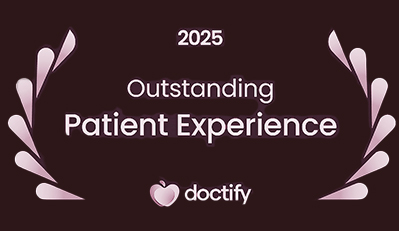
Can I choose what type of vision I want after lens replacement?
One of the biggest advantages of lens replacement surgery is the freedom to choose how you want to see.
It’s not just about removing glasses. It’s about personalising your vision to suit your lifestyle—whether that means driving, reading, using screens, or doing it all without the hassle of glasses.
So, can you choose the type of vision you want? Yes, absolutely. But it depends on the lens you choose.
In this blog, we’ll walk you through the options and help you understand how to make the right choice.
How lens replacement works
During lens replacement, your natural lens is removed and replaced with an artificial one called an intraocular lens, or IOL.
This new lens stays in your eye permanently and is selected based on your vision goals. There are different types to suit different needs.
What are your lens options?
At Mitry Vision, we offer a range of premium lenses, including:
1. Monofocal lenses
- Correct vision at one distance only (usually far).
- You’ll still need glasses for reading or close-up tasks.
- Best for people who prioritise crisp distance vision and are happy to wear reading glasses.
2. Multifocal or trifocal lenses
- Designed to give you clear vision at distance, intermediate, and near ranges.
- Reduces the need for glasses for most daily tasks.
- May cause some halos or glare in low-light settings, but most patients adjust well.
3. EDOF (Extended Depth of Focus) lenses
- Provide a continuous range of focus, especially for intermediate and distance.
- Fewer visual disturbances than some multifocal lenses.
- Great for people who want a natural range of vision and do a lot of screen work.
4. Toric lenses
- Specifically designed to correct astigmatism.
- Available in monofocal or multifocal options.
- Offer sharper, more accurate vision if you have an irregular cornea.
Can I choose different vision in each eye?
Yes. Some people choose a strategy called blended vision or monovision.
- One eye is set for distance vision.
- The other eye is set for near vision.
This approach allows your brain to blend the images, giving you good overall vision. It works well for many patients, but not everyone adapts. We can simulate this with contact lenses before surgery to see if it suits you.
How do I decide what’s best?
Your lens choice depends on:
- Your daily habits (reading, driving, screens)
- Your hobbies (golf, cooking, sewing, night driving)
- Your tolerance for halos or glare
- Whether you want to avoid glasses completely
At Mitry Vision, we guide you through all these considerations during your consultation.
Can I change my lens later?
The lens is designed to last for life, so we aim to choose the best one first time. In rare cases, lenses can be exchanged, but this is uncommon and only done if necessary.
Are premium lenses worth it?
Premium lenses cost more than standard monofocal lenses, but they offer greater freedom from glasses. If you want to reduce your dependence on specs and enjoy a full range of vision, they may be well worth it.
What about the NHS?
NHS cataract surgery typically offers a monofocal lens. You cannot choose premium lens options or blended vision unless you go private. That’s one of the major benefits of private lens replacement.
Final thoughts
You don’t just get your vision corrected with lens replacement—you get to choose how you want to see the world.
Whether it’s freedom from reading glasses or sharp night-time driving, the right lens can make a big difference.
Take our suitability self-test today to see which lens option may be right for you.
Find out if you are suitable for vision correction
Not everyone is eligible for vision correction surgery.
Find out if you could benefit from this life changing surgery by taking the quick self-suitability quiz below:




